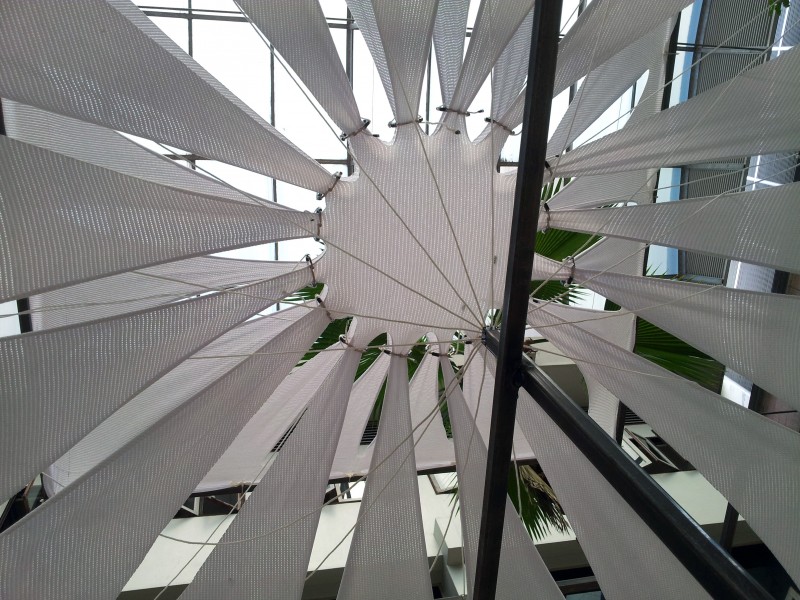Manipulating Fabric
The primary goal of the Design Experimentation Workshop on Manipulating Fabric was to expose and familiarize students with fabric as a material for design. The workshop began with two preliminary exercises meant to introduce students to the properties of fabric – rupture and attachment. These were executed in an intuitive fashion: where students literally tampered with their material in order to understand limits and potentials.
Through trial and error, students drew conclusions on the differing qualities of each material and began to establish preferences for working with one material over another.
A fabric installation was introduced as their final exercise. Issues of structure were crucial for space-making and to allow constructs to be self supporting. The exercise demanded that they make use of their newly developed skills while taking into account issues of scale and assembly. Ultimately, students were able to understand the integral relationship between surface and tension, form and performance.
As a design build exercise with fabric, the workshop dealt with formal complexity and unpredictable material performance. This called for a rigorous hands-on trial and error process. Consequently, the relationship between design and actualization became quite seamless, immediate, and integrated. Executed as a series of formal exercises, potential applications of the final constructs were not considered during the development of the workshop, but were instead retroactively discussed during the final presentations. A few of the final installations were submitted as entries to the Curtains competition hosted by The Center for American Architecture and Design at The University of Texas at Austin in March 2013.
2013
In collaboration with Roberto Requejo

